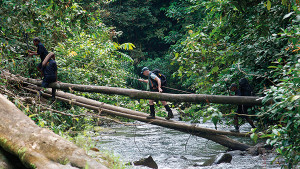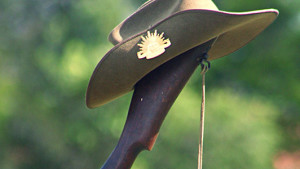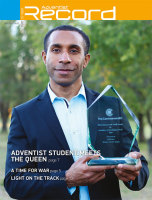In case you haven’t noticed, “discipleship” has become something of a focus. And if I’m not mistaken, this renewed focus is going to influence many thoughtful Adventists to engage with classic texts on the topic, including Dietrich Bonhoeffer’s The Cost of Discipleship in which he warned that the way of the cross is not easy: “The cross is not random suffering, but necessary suffering . . it is the suffering that comes from being Christian . . . Every call of Christ leads into death.”1
It was this vision of total discipleship that led Bonhoeffer to reluctantly accept the necessity of violence. He is one of the few church leaders from Germany’s Nazi era who stands innocent of collusion with Hitler. While other Christian leaders (including Adventists) were cooperating with the Nazis and participating in the exclusion of Jews, the breakaway Lutheran pastor was speaking out and acting against injustice. As a double agent he participated in a failed conspiracy to assassinate Hitler and was executed just days before the end of World War II.
“You Christians are glad when someone else does what you know must be done,” Bonhoeffer’s unbelieving sister-in-law had chided him, “but it seems that somehow you are unwilling to get your own hands dirty and do it.”
Clearly Bonhoeffer rose to this challenge. And paid the cost. His willingness to be a conscientious conspirator is also a challenge for us. “Silence in the face of evil is itself evil,” he’s believed to have said. “Not to speak is to speak. Not to act is to act.”2
So let’s talk action. If you were to happen upon a violent mugging would you be morally compelled to physically intervene using the level of force needed to prevent further harm? Does your level of ethical responsibility change depending on whethwer the victim is a stranger or a family member? What about when the victim is on the other side of the world?
Anzac Day brings up these dilemmas for me. One of my early forays into Record questioned how Adventists could describe soldiers as “heroes” in the light of our traditional commitment to non-combatancy. Nevertheless, Bonhoeffer’s example is hard to ignore. Do we need to re-examine Solomon’s words: “There is a time for everything . . . a time to kill and a time to heal . . . a time for war and a time for peace” (Ecclesiastes 3:1,3,8)?
Don’t get me wrong: I’m not setting up a false dichotomy between passive pew-warming and military combat. There are many ways for Christians to actively but non-violently participate in conflict zones: consider Palestine’s Christian Peacemaker Teams, the work of NGOs such as Red Cross, Medecins Sans Frontieres or ADRA, or even the example of Adventist non-combatants such as World War II medic Desmond Doss (look out for Hacksaw Ridge, Mel Gibson’s biopic, which will be released later this year).
But I’m finding it increasingly hard to criticise an Adventist who chooses to join the police force, knowing that he or she may be required to inflict fatal harm in the name of community safety. I can’t bring myself to condemn American Sam Childers, the “machine gun preacher” who leads armed raids against militant groups in Africa in order to rescue captive children. And while I remain dubious about most military ventures, I’m beginning to think that perhaps there may be times when the most Christian thing to do is to, sorrowfully and prayerfully, pull the trigger.
Sources
-
Bonhoeffer, D (2001). Discipleship, edited Kelly & Godsey, Fortress Press, Minneapolis, Minnesota, pp 86-87.
-
Metaxas, E (2010). Bonhoeffer: Pastor, martyr, prophet, spy, Thomas Nelson, Nashville, Tn, p359.







